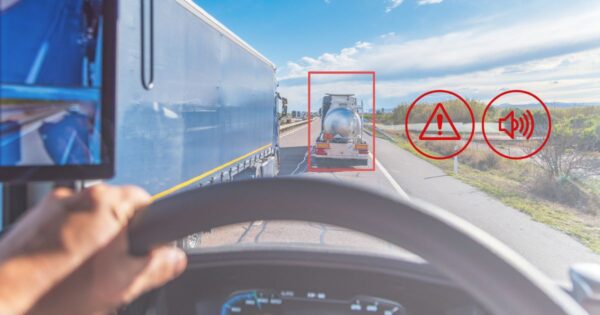Imagine being audited by the Traffic Commissioner — and realising your paperwork isn’t in order. The stress, the disruption to your operations, and the very real risk of losing your operator’s licence… it’s a situation no fleet manager wants to be in — yet it’s surprisingly common when compliance slips through the cracks.
For UK businesses running HGV fleets, maintaining O licence compliance is critical — not just to stay legal, but to keep operations smooth, efficient and safe. In an industry where even small compliance oversights can result in serious penalties and financial losses, the importance of actively managing your operator’s licence cannot be overstated.
In this guide, we’ll break down what your O licence covers, common mistakes operators make, how to prepare for audits, and how smart tools like telematics and fleet management platforms can make compliance simpler.
What is an operator’s licence and why does it matter?
An operator’s licence (O licence) is a legal requirement for businesses that use goods vehicles over 3.5 tonnes for hire or reward in the UK. Issued by the Traffic Commissioner, it confirms your commitment to meeting strict safety, maintenance and management standards.
There are three types:
- Standard national licence – for carrying your own goods and other people’s goods within the UK
- Standard international licence – as above, but includes international transport rights
- Restricted licence – only permits the operator to carry their own goods
Whether you’re a courier company, logistics operator or manage any commercial HGV fleet, your O licence is fundamental to operating legally and responsibly.
What’s involved in an O licence audit?
An O licence audit is a detailed review carried out by the Traffic Commissioner or DVSA to ensure your business complies with regulations. This includes reviewing:
- Vehicle maintenance records
- Driver qualifications and training documentation
- Driver hours logs, focusing on tachograph data to verify working and rest times
- Evidence of compliance with safety and environmental standards
- The transport manager’s role and effectiveness in overseeing operations
- Accuracy and completeness of all relevant paperwork
The aim is to confirm your fleet operates safely, legally, and responsibly with up-to-date paperwork. The transport manager plays a central role in ensuring day-to-day compliance and safe fleet operations. Having someone qualified, experienced, and proactive in this position is critical to avoiding costly mistakes.
Preparation is key
Preparation is crucial for a smooth audit experience — and it’s more than just having the right paperwork. Keeping maintenance logs current, recording driver qualifications and CPC training, filing incident reports, and using telematics data to support your compliance all help demonstrate your fleet is safe, organised and law-abiding.
Being proactive not only helps avoid penalties but also improves fleet performance, strengthens trust with regulators and customers, reduces administrative workload and can save money by preventing fines and unplanned downtime.
The importance of managing your operator’s licence effectively
Many transport managers obtain their O licence then assume the job is done. But holding the licence is only half the battle. Regular compliance checks and timely reporting are vital.
Common issues include:
- Outdated or incorrect information (such as operating centre addresses, transport manager details)
- Failure to report changes to the Traffic Commissioner promptly
- Missing maintenance records
- Lapsed or insufficient driver CPCs
- Not conducting regular O licence checks to ensure conditions and undertakings are met
These problems can lead to warnings, fines, or even losing your licence — with serious impacts on your finances, operations and reputation.
Simplifying compliance management
CameraMatics helps operators stay on top of O licence responsibilities by streamlining administration and reducing human error. The platform makes day-to-day compliance easier with:
- Automated reminders for licence renewals, driver CPC training, maintenance and DVSA checks
- Secure digital recordkeeping instantly accessible during inspections
- Audit-ready reports tracking your compliance status anytime
- Centralised driver and vehicle profiles linking licences, insurance, training and certifications
- Automatic change tracking to log updates affecting your O licence
These tools save time, boost team accountability and keep you ready for audits or Traffic Commissioner reviews.
Data-backed compliance with telematics
Beyond document management, CameraMatics uses telemática to deliver insights supporting real-time O licence compliance. Live fleet data helps you:
- Monitor driver behaviour and spot safety risks early
- Track working hours accurately through tachograph integration
- Schedule proactive maintenance based on actual vehicle use
- Capture event data to support investigations or defend claims
By combining smart compliance tools with real-time telematics, CameraMatics gives operators full control — reducing risk, cutting admin and staying audit-ready.
Quick O licence checklist: are you audit-ready?
- Keep driver and vehicle records up to date — ensure licences, CPCs, insurance and training are current and stored securely
- Use automated alerts — avoid missed deadlines for renewals, maintenance and DVSA checks with smart reminders
- Monitor driver behaviour with telematics — identify risky habits early and promote safe, compliant driving
- Schedule and document maintenance proactively — prove you’re on top of vehicle safety with logged maintenance history
- Regularly generate and review compliance reports — spot issues before they become problems
- Keep your transport manager and team informed — ensure everyone understands their role in staying compliant
Staying on top of your operators licence doesn’t have to be overwhelming. If you’re not sure where to start, we’re here to help.








